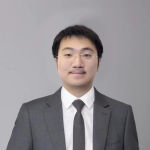
taow3@sustech.edu.cn
Basic Introduction:
Wei Tao, a Ph.D. from Peking University and a Research Assistant Professor at Southern University of Science and Technology. His major research areas include: ozone pollution chemistry, haze pollution chemistry, and urban-atmospheric interactions. He is devoted himself to optimize and improve air quality models, and has rich experience in model development. He independently developed several functional modules in the regional air quality model of WRF/Chem, including a tagging-based tracing module for primary pollutants, a source attribution and process analysis module for the expanded odd-oxygen family, and an aqueous phase chemistry module, etc. He has published over 20 papers indexed by SCI in international academic journals.
Professional Experience:
2018.03-2022.03 Max Planck Institute for Chemistry, Germany Postdoctoral Fellow
2022.08- Southern University of Science and Technology Research Assistant Professor
Education:
2008.09-2012.06 Nanjing University Bachelor environmental chemistry
2012.09-2018.01 Peking University Ph.D. environmental geography
Research Interests:
1. Ozone Pollution Chemistry. The main focus is on conducting simulation studies on the source attribution and source-sink budget analysis of ozone and the expanded odd-oxygen family, based on the independently developed expanded odd-oxygen family source attribution and process analysis module.
2. Haze Pollution Chemistry. The main focus is on conducting simulation studies on the spatiotemporal distribution of fine particulate matter pH and the formation mechanism of secondary components during haze pollution events in China, based on the independently developed aqueous phase chemistry module.
3. Urban-Atmosphere Interactions. The main focus is on the forcing effects induced by changes in the underlying surface during the urbanization process in China on the local and regional scale atmospheric environment.
Published Works:
1. Wang, H.1; Huang, C.1; Tao, W.1; Gao, Y.; Wang, S.; Jing, S.; Wang, W.; Yan, R.; Wang, Q.; An, J.; Tian, J.; Hu, Q.; Lou, S.; Pöschl, U.; Cheng, Y.; Su, H.: Seasonality and reduced nitric oxide titration dominated ozone increase during COVID-19 lockdown in eastern China. npj Climate and Atmospheric Science, 2022, 5, 24, 10.1038/s41612-022-00249-3. (Co-first authors)
2. Tao, W.; Su, H.; Zheng, G.; Wang, J.; Wei, C.; Liu, L.; Ma, N.; Li, M.; Zhang, Q.; Pöschl, U.: Aerosol pH and chemical regimes of sulfate formation in aerosol water during winter haze in the North China Plain. Atmospheric Chemistry and Physics, 2020, 20, 11729-11746.
3. Tao, W.; Liu, J.; Ban‐Weiss, G. A.; Zhang, L.; Zhang, J.; Yi, K.; Tao, S.: Potential impacts of urban land expansion on Asian airborne pollutant outflows. Journal of Geophysical Research: Atmospheres, 2017, 122, 7646-7663.
4. Tao, W.; Liu, J.; Ban-Weiss, G.; Hauglustaine, D.; Zhang, L.; Zhang, Q.; Cheng, Y.; Yu, Y.; Tao, S.: Effects of urban land expansion on the regional meteorology and air quality of eastern China. Atmospheric Chemistry and Physics, 2015, 15, 8597-8614.
5. Sadiq, M.1, Tao, W.1, Liu, J., and Tao, S.: Air quality and climate responses to anthropogenic black carbon emission changes from East Asia, North America and Europe, Atmospheric Environment, 120, 262-276, http://dx.doi.org/10.1016/j.atmos env.2015.07.001, 2015 (co-first author)
